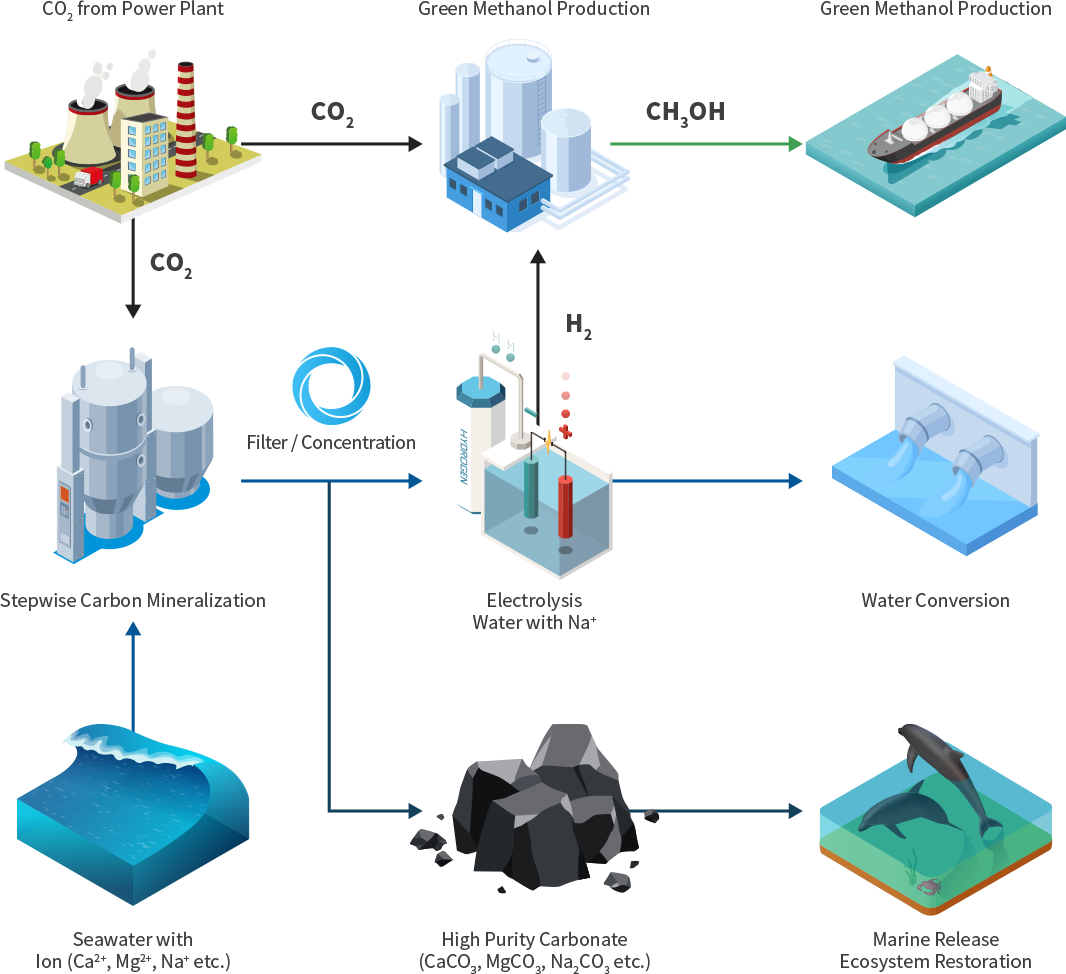ADVANCES IN TECHNLOLOGY
Seawater Electrolysis
STICO Lab is advancing several carbon capture and storage opportunities around the world to help support our commitment to the Paris Agreement.

When seawater and brine water are electrolyzed, ions such as calcium and magnesium remain in a dissolved state
and are converted to carbonate form by reacting with carbon dioxide. This salt form has a decisive action to
shorten the life of the electrode by generating scale.
In the case of this technology, the life of the electrode is increased by preferentially separating calcium
and magnesium carbonates from seawater at each stage. In addition, the use of a new catalyst developed
in-house and the concentration technology of seawater containing excess sodium maximizes the electrolysis
efficiency.
The series related to the carbonate manufacturing and seawater electrolysis from the inflow of seawater or
brine can be viewed in the video on the page explaining CCUS - Carbon Mineralization.
(Please watch the video named stepwise carbon mineralization process)

Seawater Desalination
It is a future technology that can be used as industrial water and even drinking water through seawater electrolysis and additional treatment of the supernatant after each step of carbonate production.

